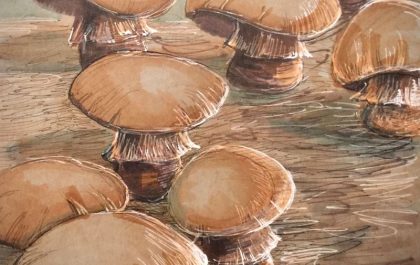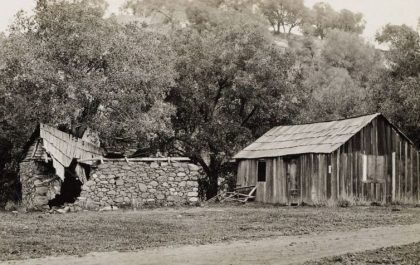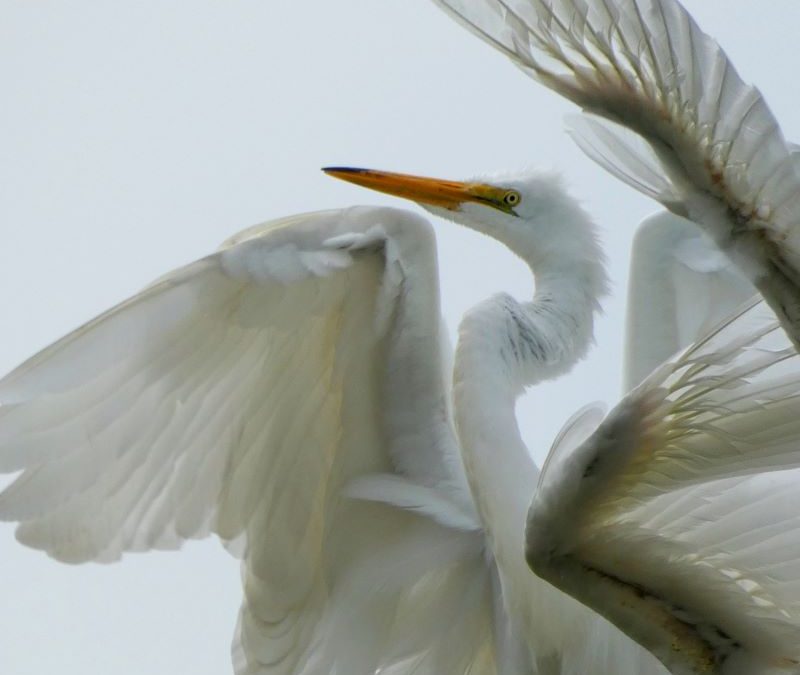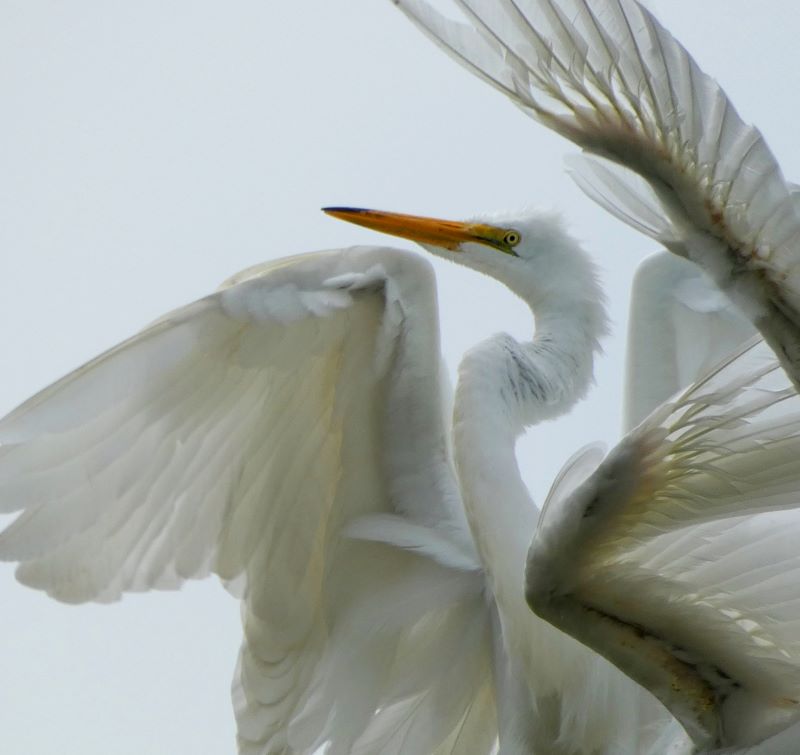
The least Bell’s vireo, a small songbird most Angelinos have never seen or even heard of, has been in the news lately. This federally listed endangered species has found a refuge in a recently restored stretch of the LA River, and a reprieve from extinction.
What does it mean to be a federally listed endangered species? What’s the difference between a threatened and an endangered species? How close to extinction must a plant or animal be to qualify for these lists, and does it make a difference?
Endangered species are plants and animals that are in immediate danger of extinction. Threatened species are plants and animals that are rapidly declining and are likely to become endangered throughout all—or a significant portion of—their range. That decline can be alarming fast—a plunge rather than slow collapse. Unfortunately, the process to list a species is time consuming.
Species are nominated for state and federal protection through a process that begins with a petition. Anyone can submit a petition, but they must supply documented information on the biology, distribution, and threats to the species. At the federal level, petitions are submitted to the U.S. Fish and Wildlife Service and the National Oceanic and Atmospheric Administration Fisheries Office. The agencies have 90 days to respond, followed by a year to publish a finding on whether protections are warranted. If a species is listed, the government must develop a monitoring plan that includes reevaluation every five years.
If the agencies fail to meet the deadline or any other part of their legal obligation, the petitioners can sue under the Endangered Species Act. It’s a lengthy process, so is resubmitting species that have been previously denied protection, but conservation organizations and committed individuals keep fighting for thousands of species that are potentially at risk.
The system is flawed but the ESA remains the most robust law of its type in the world, and all of the evidence suggests that it does help. A 2019 study found that the Endangered Species Act has, “prevented the extinction of roughly 291 species since passage in 1973, and has to date saved more than 99% of species under its protection.
The Federal Endangered Species Act was signed into law on December 28, 1973 and went into effect in 1974. It’s one of several tools used in the often desperate effort to protect species from receiving a one-way ticket to Passing the act decades. Protecting it is an ongoing battle.
The struggle to create a federal program to protect at-risk plants and wildlife began in the 1890s, when conservationists organized for the first time to push Congress to enact protections.
The Lacey Act of 1900, named for Iowa Representative John F. Lacey and signed into law by President William McKinley, was one of the first laws designed to protect wildlife. It restricted the trade in wildlife, fish, and plants that have been illegally taken, possessed, transported, or sold. It sounds good, but it wasn’t enforced, and enforcement was desperately needed, because the fashion in ladies hats was well on its way to obliterating a key segment of the North American bird population.
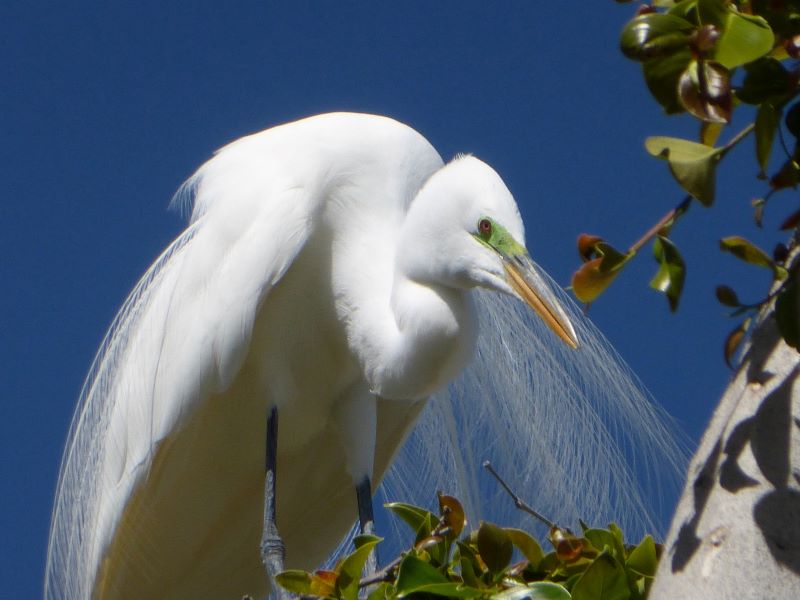
The fashion industry was rapacious and feathers were all the rage in the late nineteenth century. Egrets—snowy and great—were the most popular but it is estimated that, by 1886, as many as fifty North American bird species targeted by plume hunters were at risk for extinction. Plume hunters ravaged bird populations, killing millions of breeding pairs, leaving nestlings to starve.
“It was a common thing for a rookery of several hundred birds to be attacked by the plume hunters, and in two or three days utterly destroyed,” wrote New York Zoological Society Director William Hornaday, who had also served as the chief taxidermist at the Smithsonian Institution.
State and federal protections exist because activists pushed for them. Saving endangered species starts at the grassroots level. A pair of Boston society ladies were at the heart of the North American movement to save the egrets. Harriet Lawrence Hemenway and Minna Hall of Boston helped initiate a feather boycott, recruiting other influential women to their cause. They founded the National Audubon Society in 1896, four years before the Lacey Act was signed into law.
After years of protesting and campaigning, activists began to make an impact. New York State outlawed the sale of all native birds and their feathers in 1911. A statute was enacted in 1909 to protect non-game birds, followed by the Weeks-McLean Act of 1913 and the Migratory Bird Treaty Act of 1918. These laws provided the first nationwide protections for wild birds and finally ended the fashion industry’s feather fixation. The Migratory Bird Conservation Act followed in 1937. The egret population recovered thanks in large part to these pieces of legislation—and the activists who advocated for them, but the new laws came too late to save the Carolina parakeet, which was declared extinct in 1938.
Birds weren’t the only targets of the fashion industry. The Southern sea otter, Enhydra lutris nereis, and the Guadalupe fur seal, Arctocephalus townsendi—two species found only on the West Coast—were hunted to the edge of extinction for their fur. It is estimated that there were as few as 50 sea otters left in the wild at the lowest point. More protections were needed, and there were other problems—big ones.
Unscrupulous collectors were also taking a major toll on wildlife. Collectors sought out birds’ eggs, moths and butterflies—the rarer, the better. In her 1909 book Girl of the Limberlost, novelist and naturalist Gene Stratton Porter describes how a key part of the Indiana wetlands ecosystem, the Limberlost, was systematically destroyed. The central character supports herself by capturing increasingly rare moths and selling them to collectors. It was a finite resource, and would soon become even scarcer.
Trophy hunting was the fashion for the wealthy: he who killed the most grizzly bears, or wolverines, or wolves, could bask in the glow of his colleagues’ approbation. Newspaper reports on the number of deer and mountain lions killed for sport in the Santa Monica Mountains in the late nineteenth and early twentieth century leave one wondering how anything survived.
Hunting trips to once-remote places like Yellowstone and Yosemite became popular as soon as the railroads put those places in easier reach, but with the westward expansion of railroads and the population explosion that expansion facilitated, came the biggest threat to native species: wide-scale habitat loss, fragmentation, and degradation.
In 1882, Indiana’s chief engineer came up with a plan to drain the Grand Kankakee Marsh—500,000 acres of wetland—to increase the amount of agricultural land available for cultivation. Steam-powered dredge boats ironed out more than 2000 bends. Ditches drained the water away. By 1917, this once massive wetland known as the “Everglades of the North” was a muddy expanse of nothing.
The loss of Indiana’s wetlands was a major ecological disaster, but it was also just one of many. It’s not a coincidence that the passenger pigeon went extinct in 1900. While overhunting greatly contributed to this species demise, the sudden catastrophic loss of such a huge expanse of the pigeon’s key breeding habitat helped seal its fate.
Steam power enabled massive areas of wetland throughout the county to be drained and developed. In 1938, in response to heavy rains and widespread flooding, the city of Los Angeles began an ambitious plan to channelize almost the entire Los Angeles River, including all of its tributaries. It’s estimated that more than ninety percent of California’s wetlands were drained and destroyed in the first half of the twentieth century. The impact on wildlife was devastating, but so was the effect of the newly invented pesticides suddenly in use on that newly cleared land and throughout America.
DDT (dichloro-diphenyl-trichloroethane) was the first widely available modern synthetic insecticide. It was released in the 1940s. Within 30 years of its introduction, DDT had pushed the peregrine falcon, California brown pelican, the already threatened North American golden and bald eagle population, and dozens of other species to the edge of oblivion.
“As crude a weapon as the cave man’s club, the chemical barrage has been hurled against the fabric of life—a fabric on the one hand delicate and destructible, on the other miraculously tough and resilient, and capable of striking back in unexpected ways,”conservation activist Rachel Carson wrote in her 1962 book Silent Spring. Carson’s meticulously researched book became a major tool in the battle against extinction.
“These extraordinary capacities of life have been ignored by the practitioners of chemical control who have brought to their task no ‘high-minded orientation,’ no humility before the vast forces with which they tamper,” she wrote.
The introduction of the pesticide DDT resulted in the death of an unprecedented number of birds, leaving dozens of species tottering on the brink of extinction. Banning the chemical was an urgent necessity. The impact is still being felt in Southern California, where a major manufacturer of DDT disposed of thousands of barrels of the pesticide in the ocean between Los Angeles and Catalina Island.
DDT was banned in the US in 1972. Carson died in 1964, and never saw the full impact of her work, but the movement that formed around her book continued to grow, and contributed to the passage of the Clean Air Act (1963), the Wilderness Act (1964), and the National Environmental Policy Act (1969). The Environmental Protection Agency established in 1970, was also a result of that activism. The Clean Water Act and the Endangered Species Act followed in 1972.
The goal of the ESA is to prevent extinction and to recover species to the point where the law’s protections are not needed. California has its own Endangered Species Act, which predates the federal law—it was approved in 1970, in the aftermath of the devastating 1969 Santa Barbara oil spill. California’s listed species overlap with the federal list, but the listings aren’t identical, and California has numerous listed species that have not yet received federal listing.
There are problems with the federal Environmental Protection Act, including a backlog of petitions, a near-perpetual lack of adequate funding, and pressure from special interest groups, including the powerful energy lobby. It remains the most comprehensive law of its kind, but it also depends on nonprofit watchdog organizations and grassroots activists to keep it going—they are the ones who got this movement started in the first place, and they continue to make a difference.
It would be nice to think that legislators would be united in the effort to save threatened or endangered species, but politics is very much in play, pitting conservationists against special interests and big industry in a literal life or death game of who gets to stay on the planet.
Has it been worth the effort? Species that have been saved from extinction by the Endangered Species Act and other related legislation include the California brown pelican, the gray wolf, the grizzly bear, the gray whale, the American peregrine falcon, the bald eagle, and the Southern sea otter. Keeping these species and hundreds of others off the endangered list, and most importantly, off that other list, the one with the dodo bird and the passenger pigeon, hasn’t been easy, and the fight continues, but it is unequivocally worth the effort.
The Santa Monica Mountains, an island of open space in a sea of urban development, is currently home to more than 50 threatened or endangered plants and animals—among the highest concentrations of such rare species in the United States. Los Angeles County as a whole has as many as 85 federally listed species, the state of California has a total of 222 endangered species and 83 threatened species.
Local species protected by the Federal Endangered Species Act include:
Riverside fairy shrimp, Streptocephalus woottoni. This tiny brine shrimp is barely the size of a grain of rice, and it’s so rare that there are only seven sightings on the citizen science site iNaturalist. The author has seen fairy shrimp just once in the Santa Monica Mountains, during the spring of 2013. This species lives in isolated vernal pools and sometimes even small puddles. Their eggs can survive years of drought and are thought to be transported on the feet of birds and other animals, but surprisingly little is known about this small crustacean, except that it is threatened with extinction.
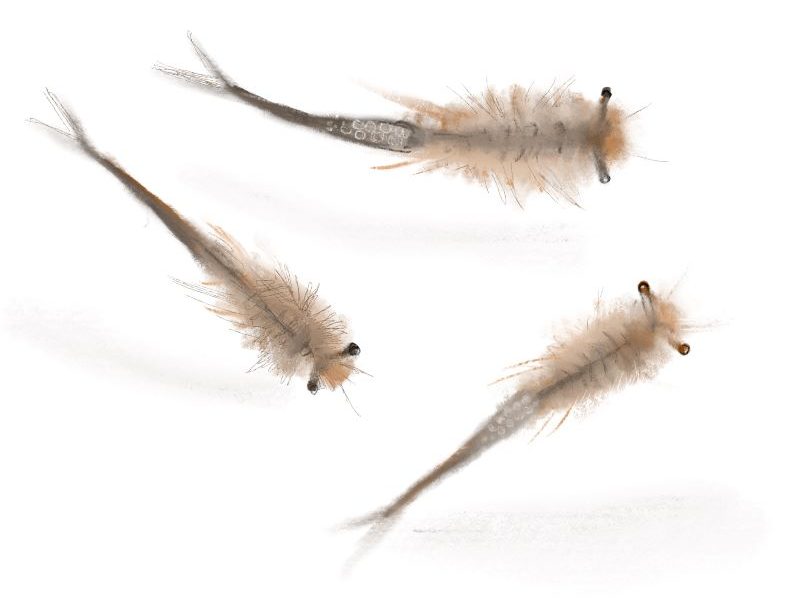
Tidewater goby, Eucyclogobius newberryi. The goby is tiny—just a couple of inches long—but it is still important. This fish has highly specific habitat needs and is struggling with habitat loss.
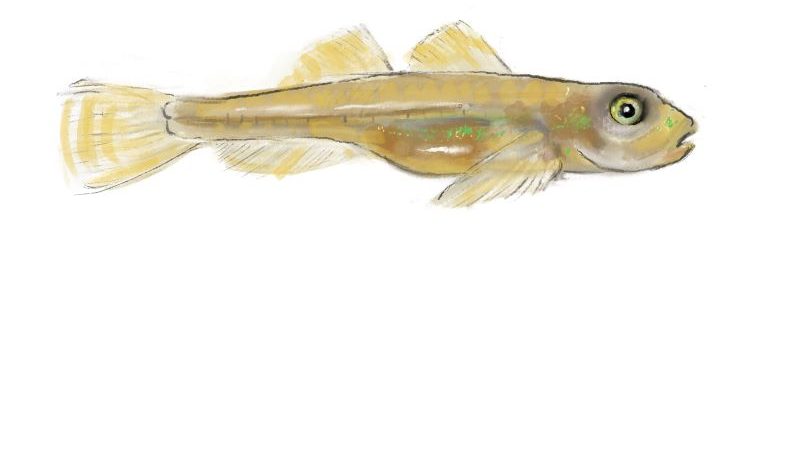
Santa Monica Mountains dudleya, Dudleya cymosa ssp. Ovatifolia. This long-lived succulent that is only found in a few locations in the local mountains and that is currently at risk from the black market sellers. This is a species that benefits not only from the Endangered Species Act but from the Lacey Act, which applies to smuggling illegally obtained plants and wildlife.
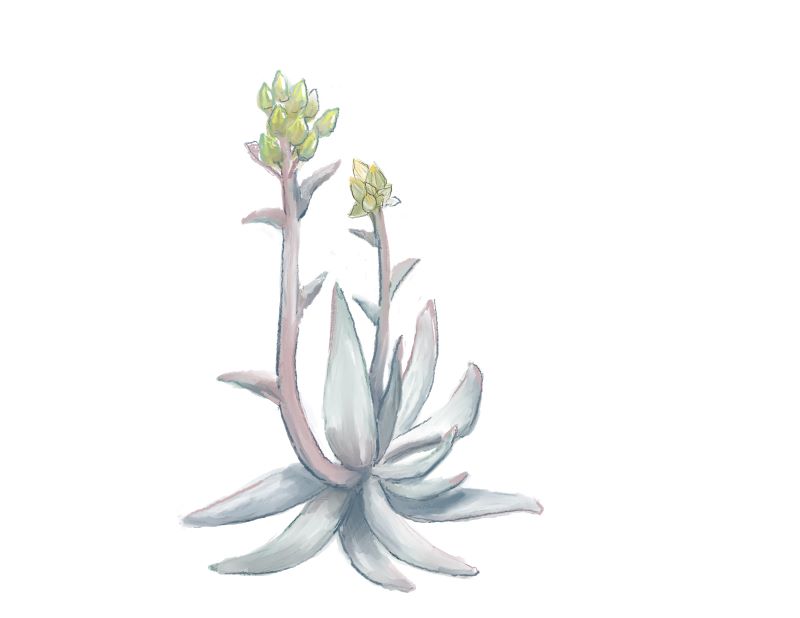
Braunton’s milk-vetch, Astragalus brauntonii. This purple-flowering member of the pea family grows in only a few locations in the Southern California Mountains, including at least one location in Topanga—where it made headlines when it was accidentally mowed down by a utility crew several years ago.

California red-legged frog, Rana draytonii. One of the state’s most endangered amphibians,. the red-legged frog is being reintroduced into the Santa Monica Mountains.
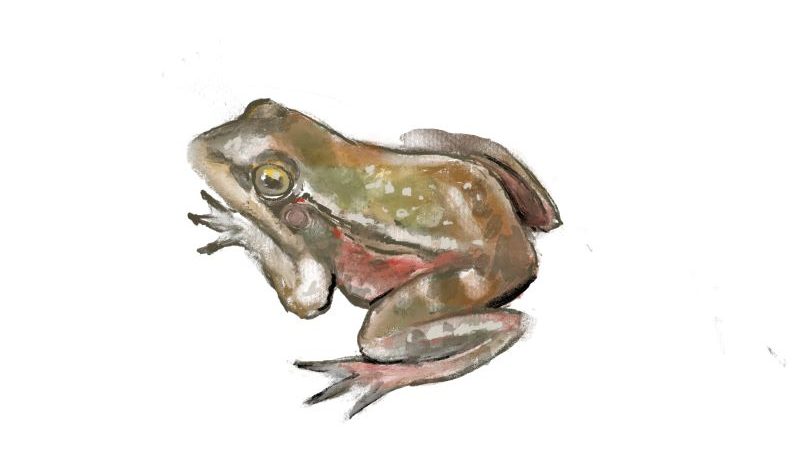
Western snowy plover, Anarhynchus nivosus nivosus. Although it’s not unusual to see snowy plovers on the beach at the Malibu Lagoon or Zuma, there are only about 2,000 of these small shore birds left on the West Coast.
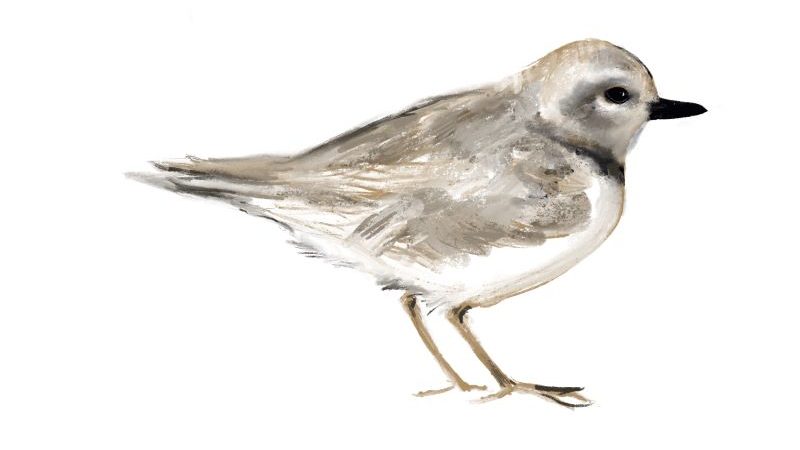
California least tern, Sternula antillarum browni. Like the Western snowy plover, the least tern has to compete with humans for space on the beach. It also suffers habitat loss from invasive plant species and the channelization of creeks and wetlands.
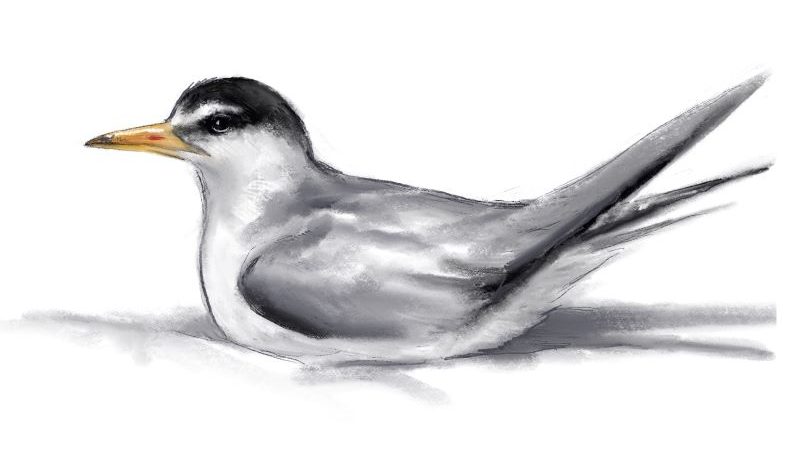
Least Bell’s vireo, Vireo bellii pusillus. This small songbird was the starting point for this feature. Topanga residents have often been blessed to hear this small bird’s song in the willows by the creeks and streams, even if they’ve never seen one, but habitat loss through its range has caused this species rapid decline. Now, thanks to green space advocates and volunteers, it is making a comeback in pockets of restored habitat along the LA River and in some of the nearby parks—a reminder of what Rachel Carson called “the extraordinary capacities of life.”
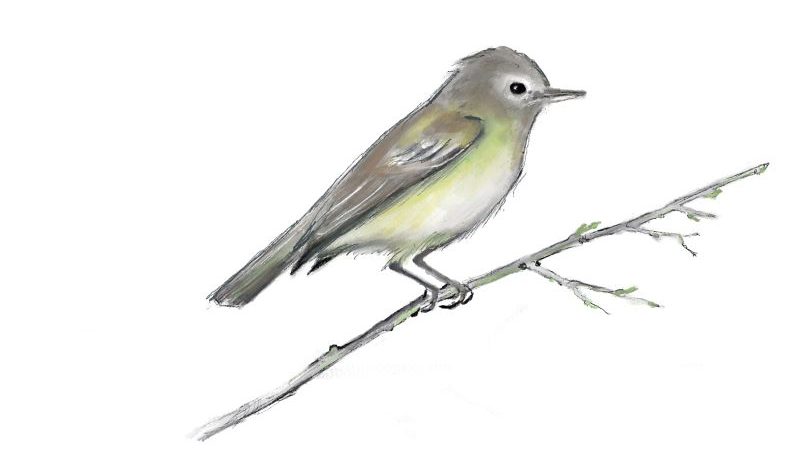
Black abalone, Haliotis cracherodii. This large marine snail was abundant along the local coast just 50 years ago. Now it is threatened with extinction, thanks to industrial-scale over-harvesting that ended in 1993 and a lethal bacterial infection called “withering syndrome.”
[Recently of interest regarding black abalone]
Lyon’s Pentachaeta, Pentachaeta lyonii. Once relatively widespread, this small, yellow, daisy-like flower is critically imperiled. There are only 32 known places in the Santa Monica Mountains and western Simi Hills where it still grows, and some of those sites remain at risk for development.
Southern steelhead trout, Oncorhynchus mykiss irideus. This fish, abundant just fifty years ago, is hurtling towards extinction, despite extraordinary efforts to save it. Climate change, water pollution and habitat loss and degradation are major problems.
Western Pond Turtle, Actinemys marmorata. This species has California endangered species status and is currently under consideration for federal protection. A small population thrives in Topanga Creek, thanks to volunteers who monitor their well-being and make sure they have water in drought years, but the species is rapidly declining, victims of habitat loss and climate change.


